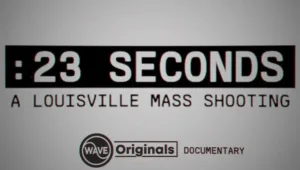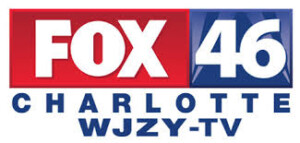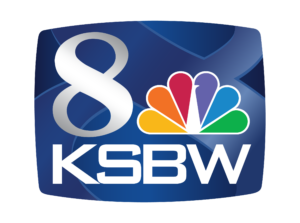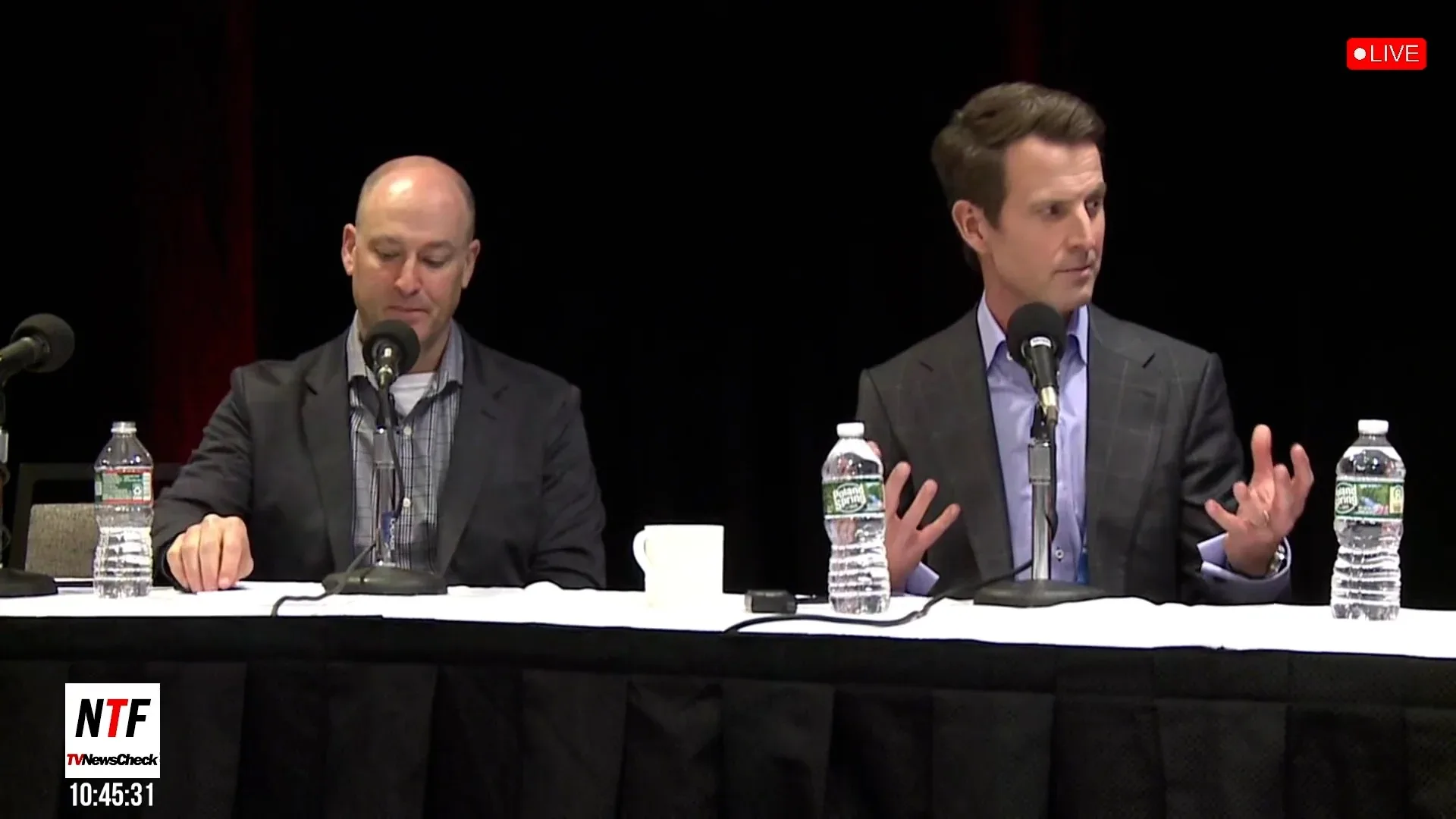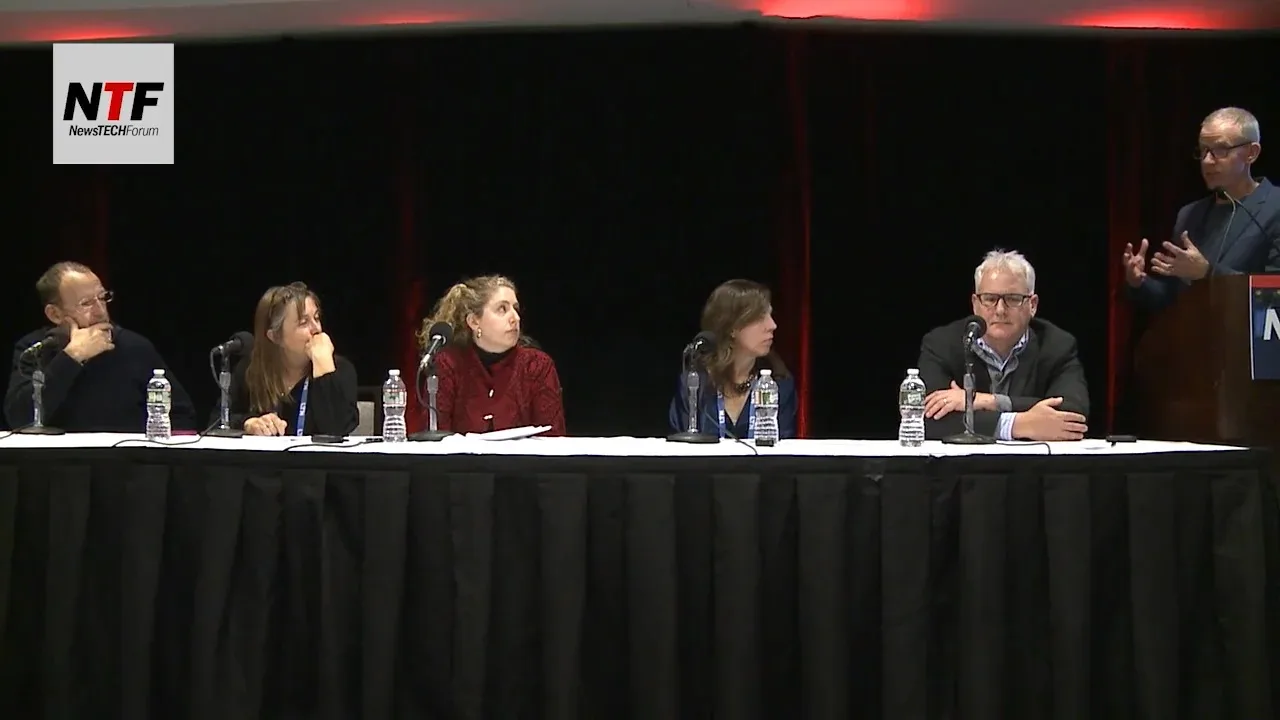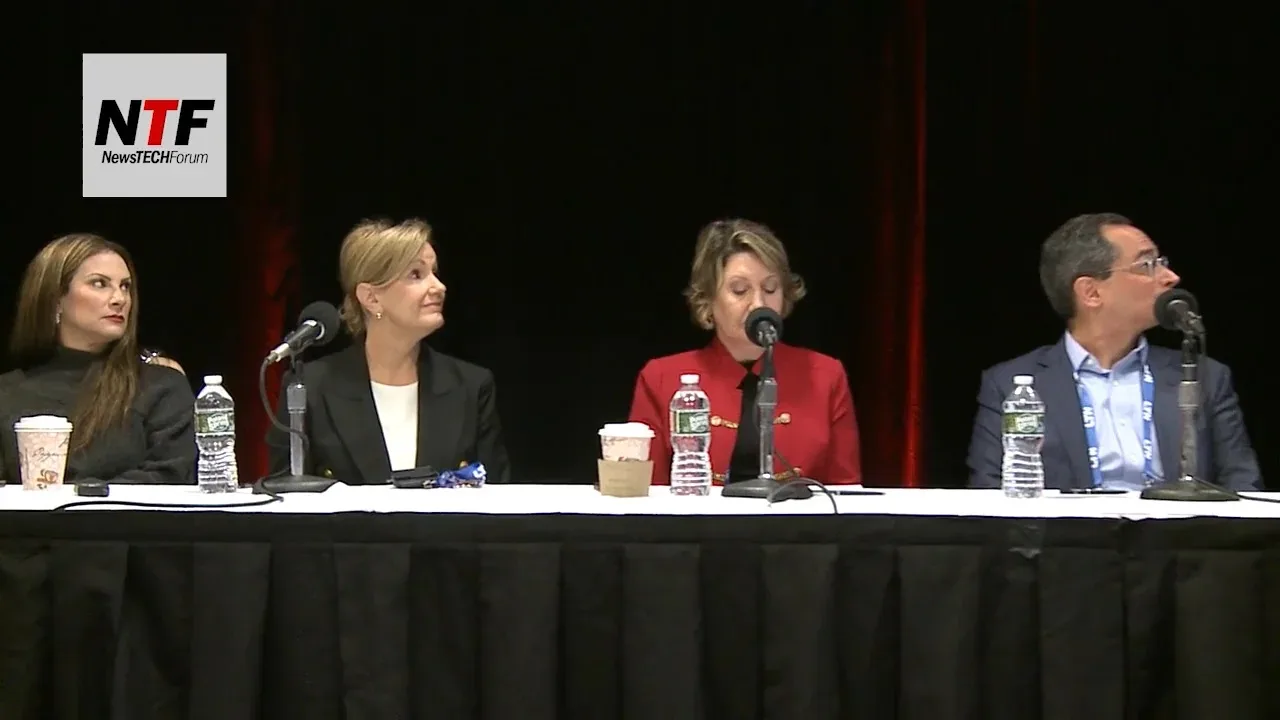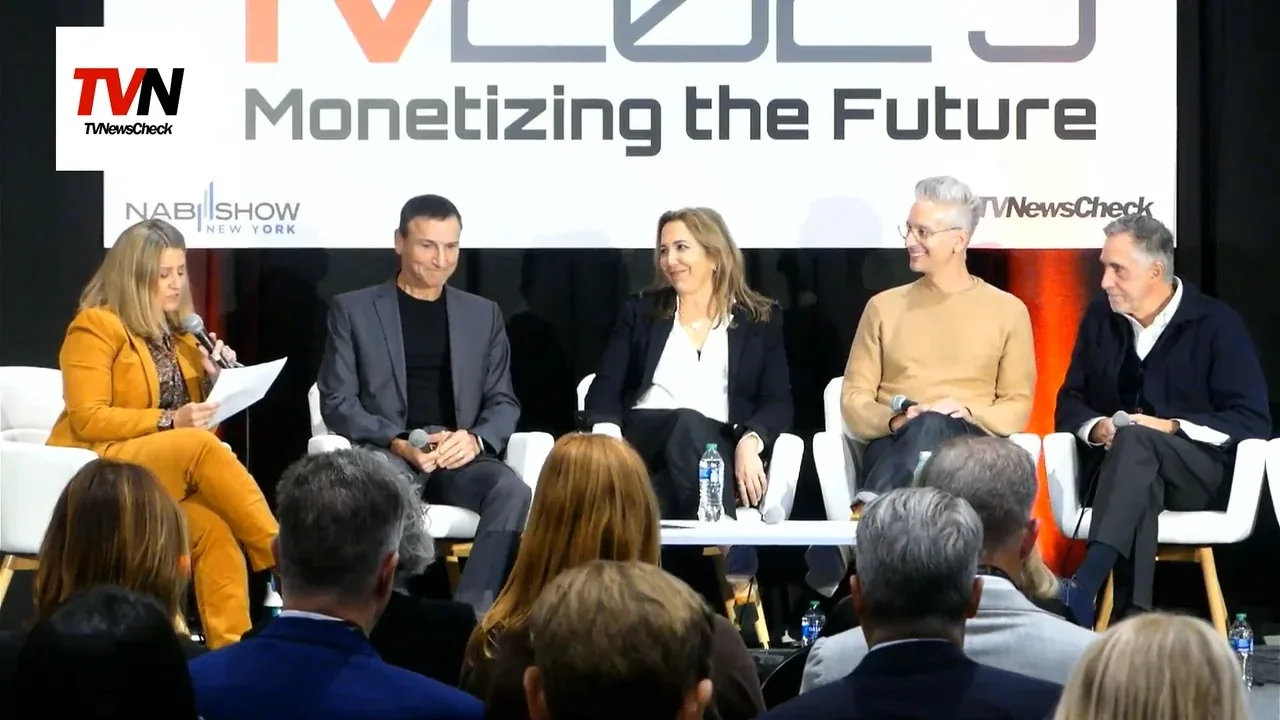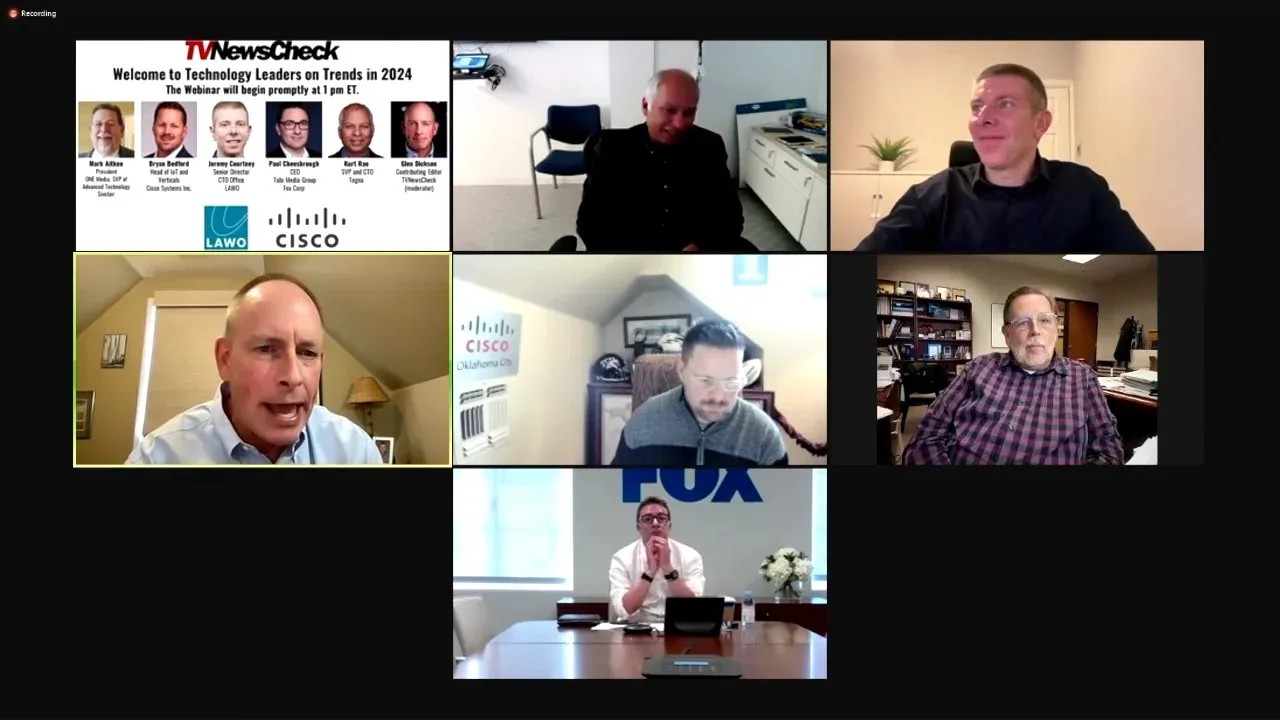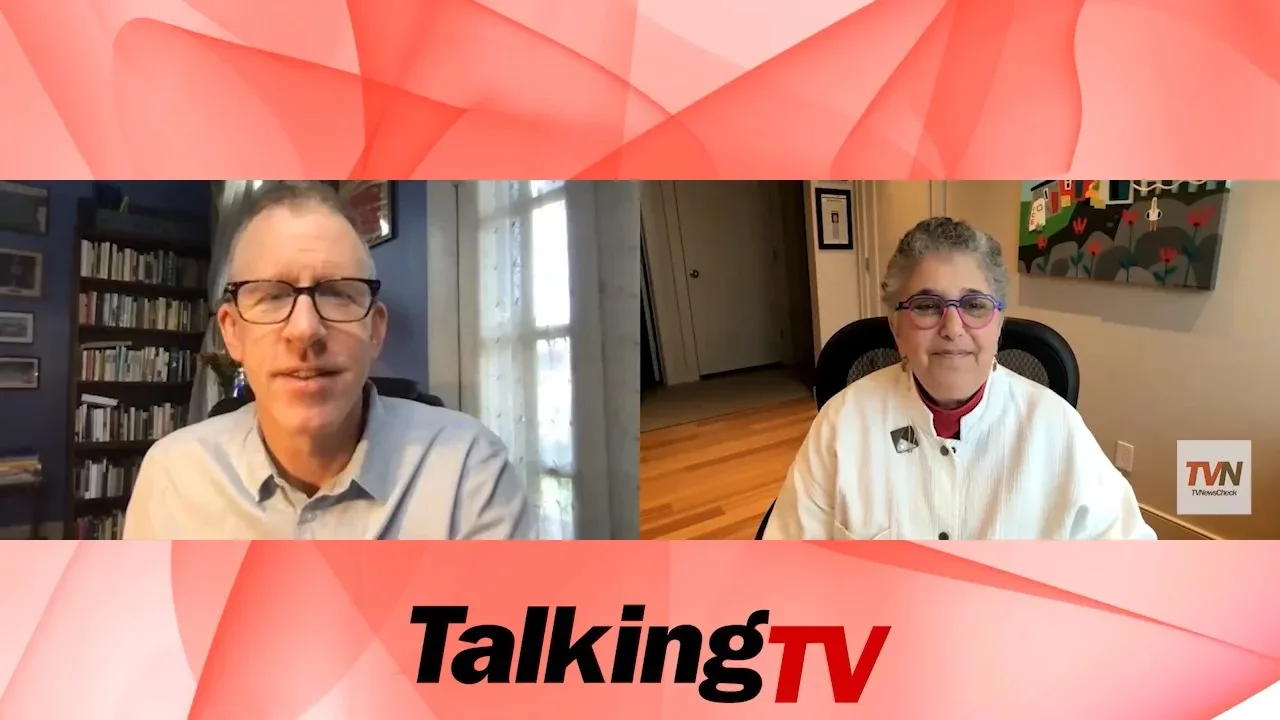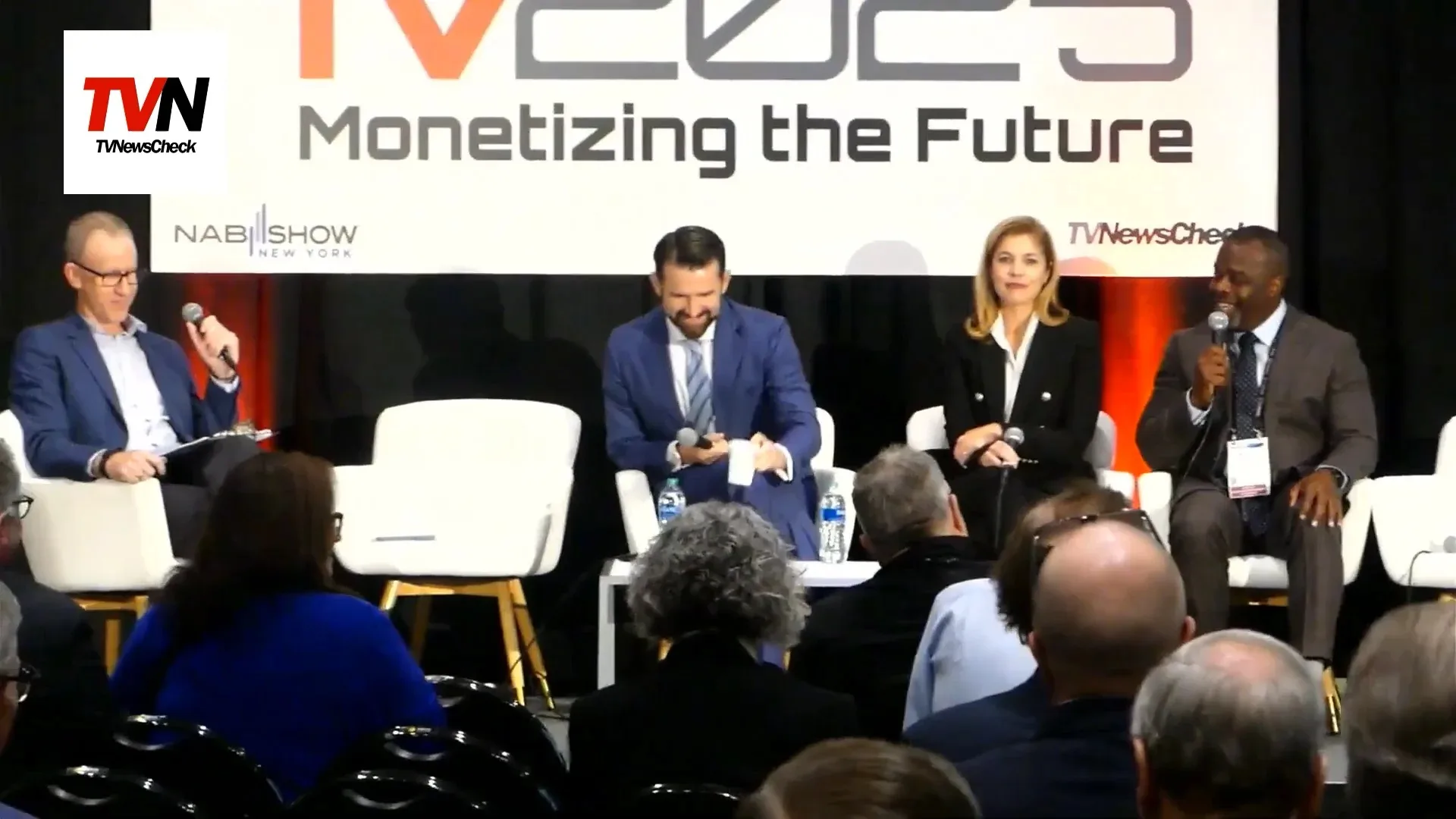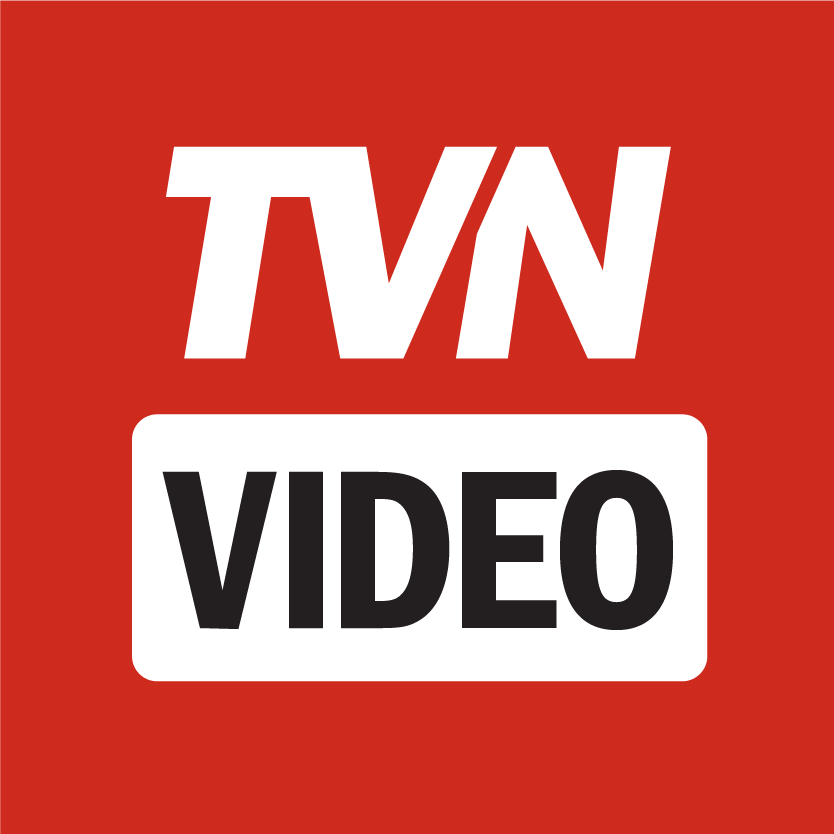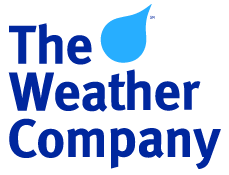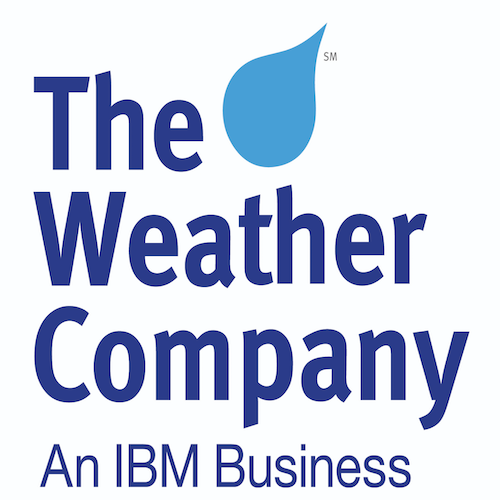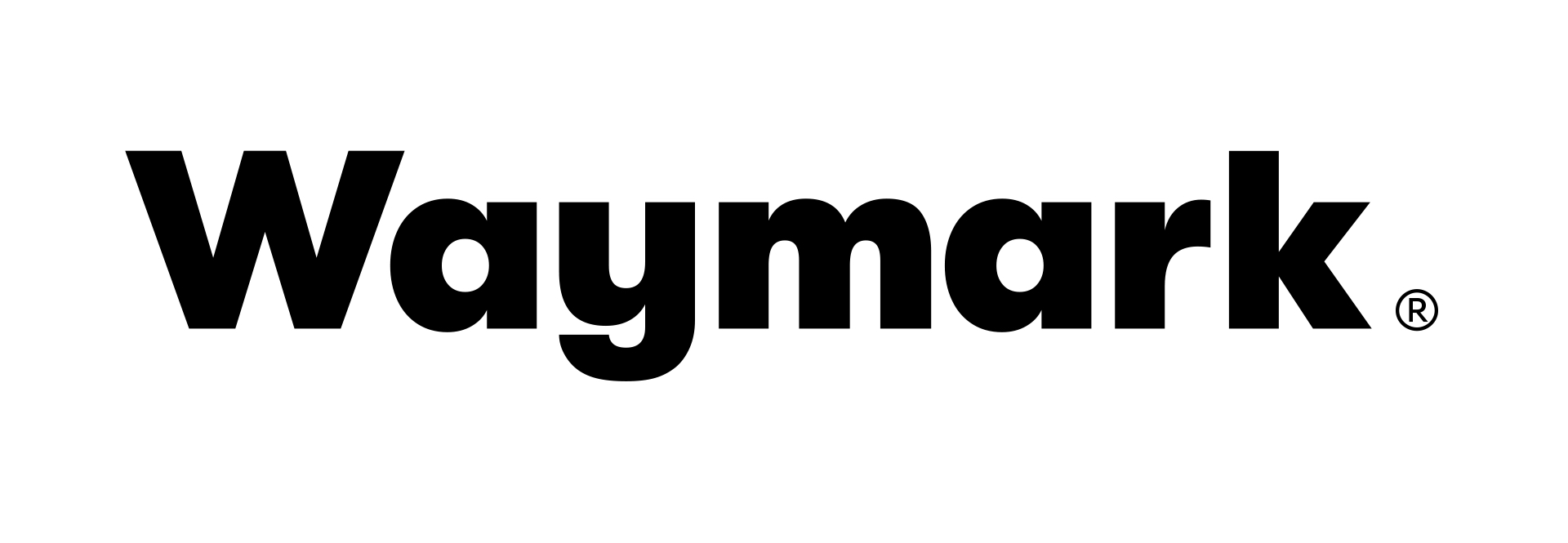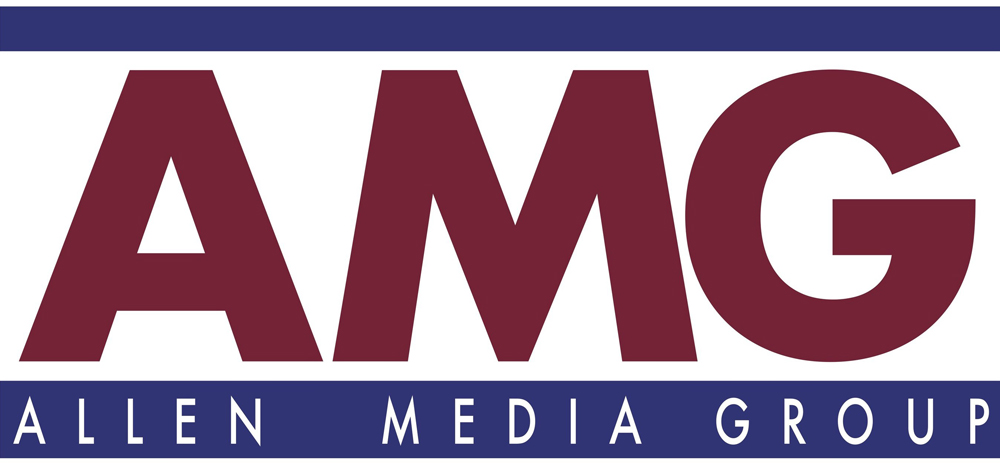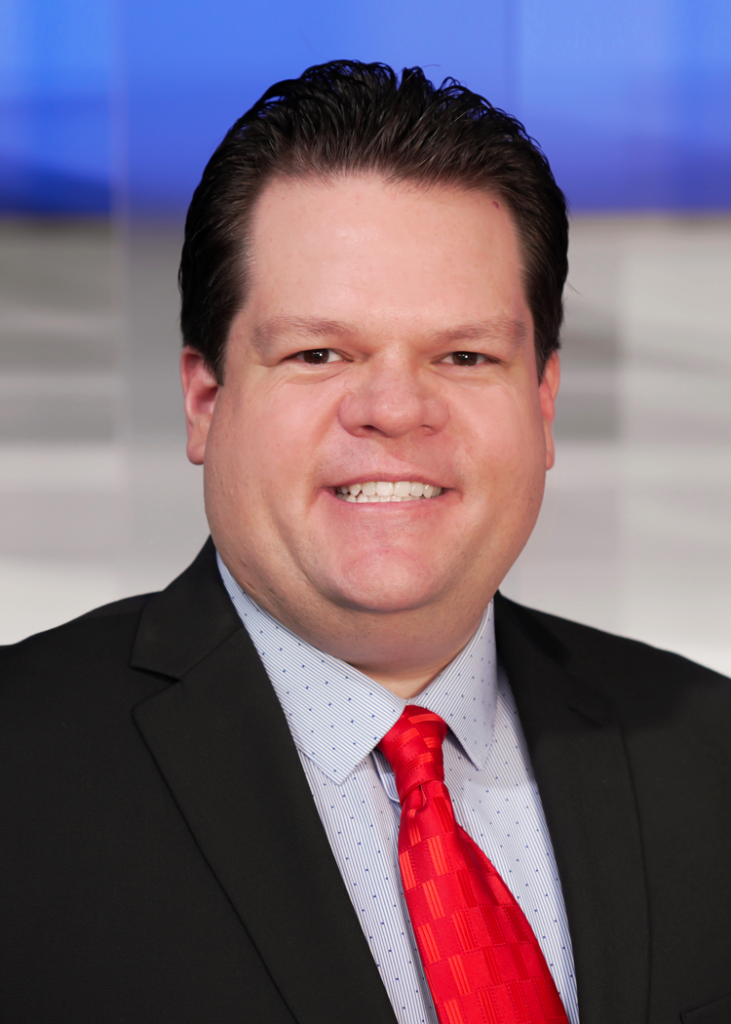
The group’s work developing Next Gen TV powered by ATSC 3.0 caps the broadcasting veteran’s 40-year career. Fox’s Richard Friedel will lead the search committee to identify Richer’s successor.
 Enthusiasm runs high as the next-generation TV standard has its official ribbon-cutting launch in Las Vegas. In addition to panels, exhibit booths of new gear, NAB Show attendees can take a ride from the Central to South Halls in an autonomous vehicle equipped with ATSC 3.0 sets, receiving an ATSC 3.0 signal sent from an experimental Sinclair transmission facility 15 miles away.
Enthusiasm runs high as the next-generation TV standard has its official ribbon-cutting launch in Las Vegas. In addition to panels, exhibit booths of new gear, NAB Show attendees can take a ride from the Central to South Halls in an autonomous vehicle equipped with ATSC 3.0 sets, receiving an ATSC 3.0 signal sent from an experimental Sinclair transmission facility 15 miles away.
America’s Public Television Stations (APTS) will hold its 2018 Public Media Summit February 26-28 in Washington. The theme of the 2018 Summit will be The Power of Public Media. The 2018 Summit […]
 Television broadcasters around the country today are testing the ATSC 3.0 audio watermark as part of their ATSC 1.0 (A/53) transmission. Not only are the tests aimed at offering them greater insight into who is watching and how internet-connected TV services are used by viewers, but they also offer the chance for participating broadcasters to come out of the chutes running once the next-gen TV standard is finalized and approved by the FCC. Above, NAB’s So Vang at an ATSC 3.0 interactivity demo at the 2016 NAB Show.
Television broadcasters around the country today are testing the ATSC 3.0 audio watermark as part of their ATSC 1.0 (A/53) transmission. Not only are the tests aimed at offering them greater insight into who is watching and how internet-connected TV services are used by viewers, but they also offer the chance for participating broadcasters to come out of the chutes running once the next-gen TV standard is finalized and approved by the FCC. Above, NAB’s So Vang at an ATSC 3.0 interactivity demo at the 2016 NAB Show.
 Many of the same app developers focused on the web today will help bring interactivity to ATSC 3.0 viewers in the future thanks to the standard’s W3C compliance and clever use of broadcast, broadband and non-real-time content in the home. Above, NAB’s So Vang demos the interactive in-home experience offered by 3.0 in the NAB Futures Zone during the NAB Show last month.
Many of the same app developers focused on the web today will help bring interactivity to ATSC 3.0 viewers in the future thanks to the standard’s W3C compliance and clever use of broadcast, broadband and non-real-time content in the home. Above, NAB’s So Vang demos the interactive in-home experience offered by 3.0 in the NAB Futures Zone during the NAB Show last month.
Sinclair Developing Next-Gen TV Standard
 Spearheaded by Mark Aitken, Sinclair’s VP of advanced technology, the new “broadcast-centric” transmission standard is being designed to address an issue Sinclair feels is being left out of ATSC’s efforts: the ability to reach viewers on their mobile devices. “ATSC 3.0 ought to be whatever broadcasters want it to be,” Aitken says. “This process should be about bringing broadcasters to the table for a solution, rather than having it dictated to them by TV set manufacturers.”
Spearheaded by Mark Aitken, Sinclair’s VP of advanced technology, the new “broadcast-centric” transmission standard is being designed to address an issue Sinclair feels is being left out of ATSC’s efforts: the ability to reach viewers on their mobile devices. “ATSC 3.0 ought to be whatever broadcasters want it to be,” Aitken says. “This process should be about bringing broadcasters to the table for a solution, rather than having it dictated to them by TV set manufacturers.”
HbbTV On U.S. Broadcasters’ Agenda For IBC
 The global interactive broadcasting standard will be the focus of U.S. broadcasters at next month’s IBC gathreing in Amsterdam. Says Kevin Gage, NAB’s chief technology officer: “Our job is to go look at what are potential future capabilities of television in the U.S. The outreach with HbbTV is all part of the learning process.”
The global interactive broadcasting standard will be the focus of U.S. broadcasters at next month’s IBC gathreing in Amsterdam. Says Kevin Gage, NAB’s chief technology officer: “Our job is to go look at what are potential future capabilities of television in the U.S. The outreach with HbbTV is all part of the learning process.”
With CFP, Air Test, ATSC 3.0 Off And Running

 This week was a busy one for proponents of broadcast television’s future. On Tuesday, the ATSC issued a call for proposals for a new standard, ATSC 3.0, and the next day, Sinclair Broadcast Group’s tech guru, Mark Aitken, turned on an experimental broadcast at WNUV Baltimore of a transmission system that could be part of TV’s next-generation standard. ATSC President Mark Richer anticipates receiving a dozen or more proposals by September and plans to brief potential proponents at NAB.
This week was a busy one for proponents of broadcast television’s future. On Tuesday, the ATSC issued a call for proposals for a new standard, ATSC 3.0, and the next day, Sinclair Broadcast Group’s tech guru, Mark Aitken, turned on an experimental broadcast at WNUV Baltimore of a transmission system that could be part of TV’s next-generation standard. ATSC President Mark Richer anticipates receiving a dozen or more proposals by September and plans to brief potential proponents at NAB.
The standards group announces the formation implementation teams for two emerging standards — ATSC 2.0, which will bring non-real-time programming to broadcast TV, and emergency alerts to the mobile DTV. Dave Siegler of Cox Media heads the ATSC 2.0 team; Jay Adrick of Harris, the alerts team.
Put Next-Gen TV, Repack On Same Track

Global Next-Gen TV Group Gets To Work

The Future of Broadcast Television Initiative gathered representatives at the NAB Show this week to begin its formidable quest to develop a worldwide broadcast TV standard. “The challenges of a global specification may seem daunting, but the benefits of achieving such a goal are enormous,” said Switzerland’s Phil Laven. The new standard would replace a variety of incompatible digital standards now in use. The hope is the new specifications will let TV stations broadcast future services like ultra high-definition television and 3D as well as improve mobile recepton and integrate broadcasting fully with the Internet.
The Future Of Broadcast TV Is Next Month

ATSC Is Busy Moving TV Into The Future
 The Advanced Television Systems Committee’s work was not done with the conversion of the U.S. television system from analog to digital. Most recently, it took the initiative to add mobile transmission and reception to the DTV standard, which already is facilitating exciting new business models for broadcasters. Now it’s working on ATSC 2.0, which will include non-real-time file based content delivery, allowing for caching of programs and other data. And beyond that is ATSC 3.0 — the over-the-air transmission system that we expect to emerge a decade from now.
The Advanced Television Systems Committee’s work was not done with the conversion of the U.S. television system from analog to digital. Most recently, it took the initiative to add mobile transmission and reception to the DTV standard, which already is facilitating exciting new business models for broadcasters. Now it’s working on ATSC 2.0, which will include non-real-time file based content delivery, allowing for caching of programs and other data. And beyond that is ATSC 3.0 — the over-the-air transmission system that we expect to emerge a decade from now.
Despite Lack Of Regs, TV Turns Down Volume
While stations are preparing to order and install new equipment designed to eliminate dramatic shifts in volume between programs and commercials, they’re in a sort of limbo since the FCC hasn’t announced exactly what it will require stations, cable and satellite operators to do. But in advance of the commission’s Dec. 15 deadline to issue the regulations for the CALM (Commercial Advertisement Loudness Mitigation) Act, equipment manufacturers are busy and some station owners are moving forward to tackle the problems. In Part II next Thursday, TVNewsCheck checks in with some of the leading vendors of loudness monitoring and control solutions.


